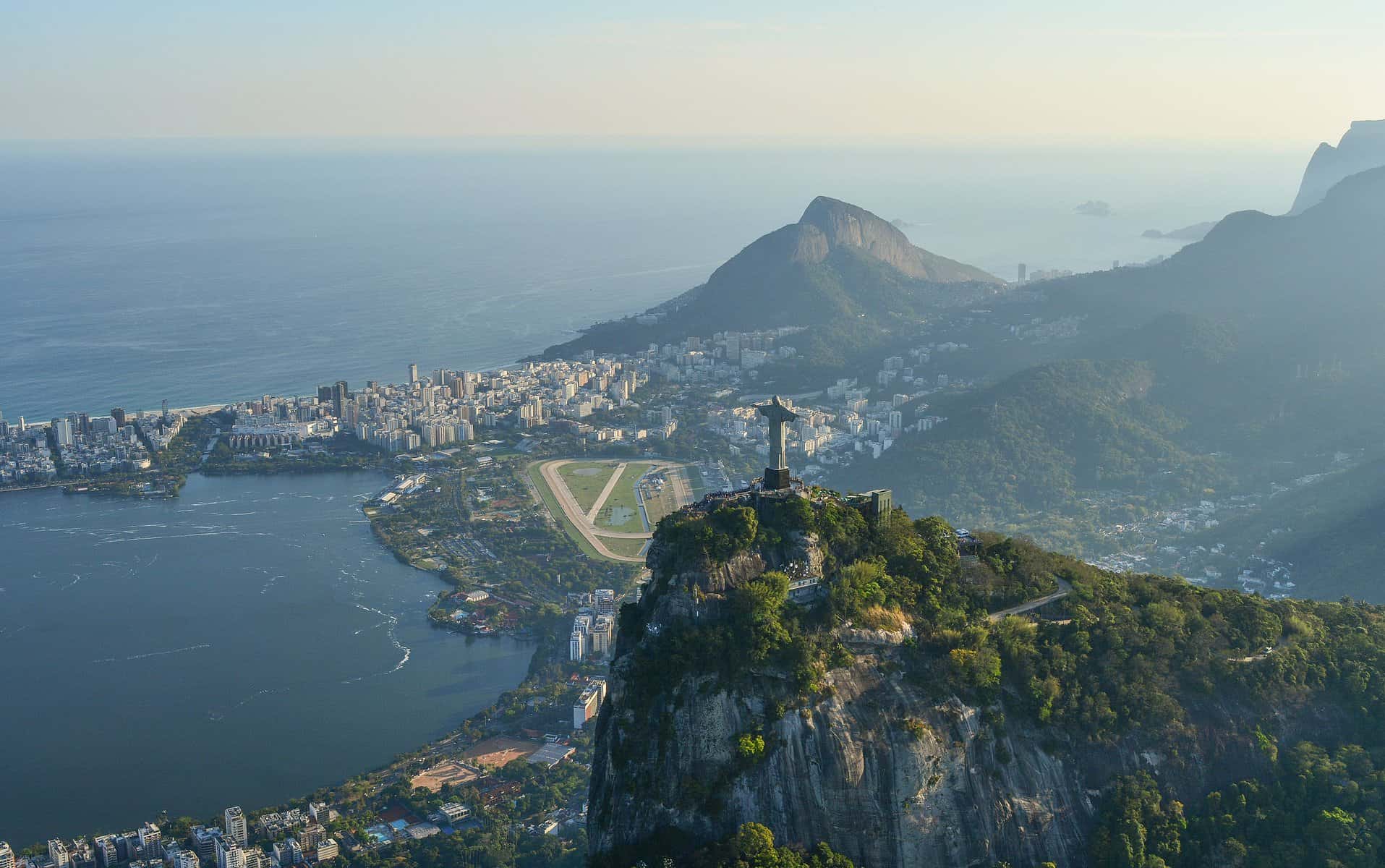
Rio de Janeiro | Best Things To Do & Essential Tips
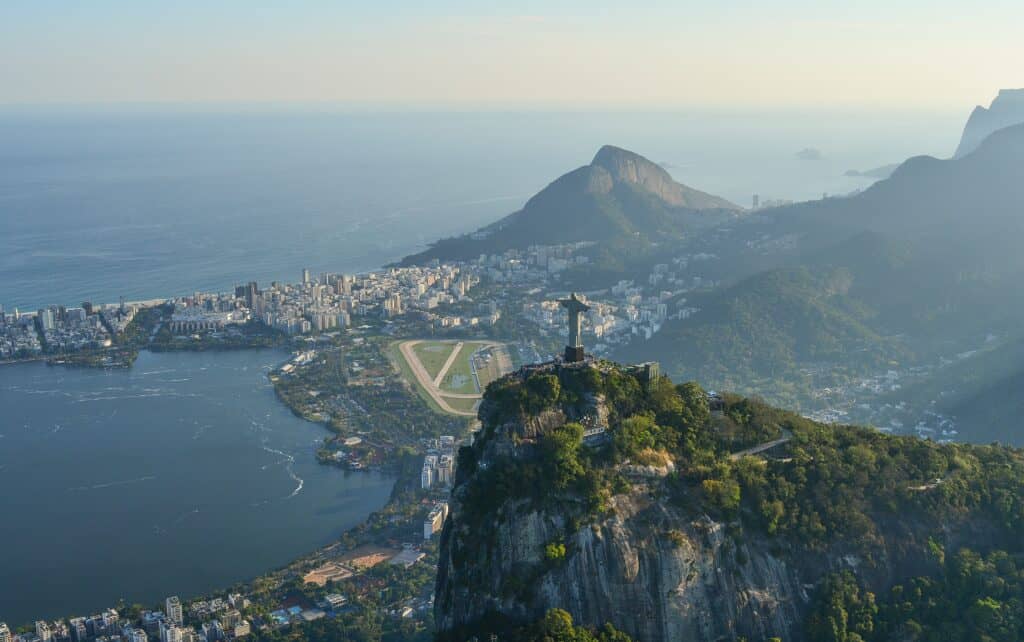
Get ready to explore one of South America’s most iconic cities, Rio de Janeiro. With its famous beaches, iconic landmarks, spectacular vistas, thriving musical heritage and delicious food scene, Rio is the perfect destination for any traveller. In this blog post, we’ll share the best things to do in Rio de Janeiro, as well as essential travel tips to make your trip to Rio unforgettable. So let’s get started.

Christ the Redeemer / Corcovado Mountain
Visiting Christ the Redeemer is an absolute must for anyone that visits Rio. This statue, perched atop the lush Corcovado mountain, offers not only an up-close encounter with one of the most famous symbols of Christianity, but also provides breathtaking panoramic views of the city below.
Completed in 1931, the Christ the Redeemer statue was designed by Brazilian engineer Heitor da Silva Costa and sculpted by French artist Paul Landowski. Standing tall at 98 feet (30 metres) and with its arms stretching an impressive 92 feet (28 metres) wide.
As you stand beneath the outstretched arms of this 98-foot-tall masterpiece, you’ll feel a sense of serenity and wonder that few other landmarks can evoke.
How To Get There: Reaching the Christ the Redeemer statue requires a journey up the steep slopes of Corcovado Mountain, which stands at 2,329 feet (710 metres) above sea level. There are several ways to reach the statue.
By Train: The most scenic option is to take the Corcovado Cog Train, which departs from the base station Cosme Velho Station. The 20-minute ride takes you through the forest area and offers stunning views of the cityscape. Trains run every 30 minutes from 7am-7pm daily. However, because the train is very popular and seating is limited, make sure you purchase your tickets in advance else you could be waiting hours to board the train to the top.
By Van: Vans operated by Paineiras Corcovado leave from three locations: Largo do Machado, Copacabana, and Barra da Tijuca. This option is convenient for those staying in these neighbourhoods. Tickets can be purchased using the ticket machines at any of the three locations.
Tip: Waiting times for the van can sometimes be long. Therefore, buy a ticket and if the queues are long then grab a taxi and use the van for the return journey. This will save you valuable time and the entrance to the monument will be included in your ticket.
By Hiking: This is another option for getting to the top of Corcovado Mountain and the route starts at Parque Lage next to the botanical garden and takes a couple of hours. However, this is not a recommended option as it is not safe due to the number of gangs that operate along the route.
Taxi or Tours: The easiest and quickest way is to hire a taxi or join a tour. Uber also offers a ride sharing service in Rio (called Junos) and will almost half the fare to get to the top of Corcovado.
The entrance fee for the Christ the Redeemer statue varies depending on the transportation method you choose. The van, train, and tour options will include the entrance fee to the monument. If making your own way up, by taxi, then an entrance ticket will need to be purchased at the visitors centre.
Once you have reached the visitors centre at the top and you have your entrance ticket to the monument, the final leg of the journey is the short shuttle bus ride to the monument area. These vans are operated privately and the only way to visit the monument.
Christ the Redeemer is open between 8am-7pm and the last shuttle bus to the monument leaves the visitors centre at 6:30pm. This attraction is one of the most visited in the city, so it is best to visit early as it gets very crowded.
Finally, as the statue is high on the mountain top it can often be covered in cloud, so the day you plan to visit can be a bit of a gamble. As soon as you arrive in the city, keep an eye on the local weather forecast and be prepared to adjust your plans so that you can visit the landmark on a clear day.
For more details and great tips on visiting Christ the Redeemer, read my blog on How To Visit Christ The Redeemer – Everything You Need To Know.
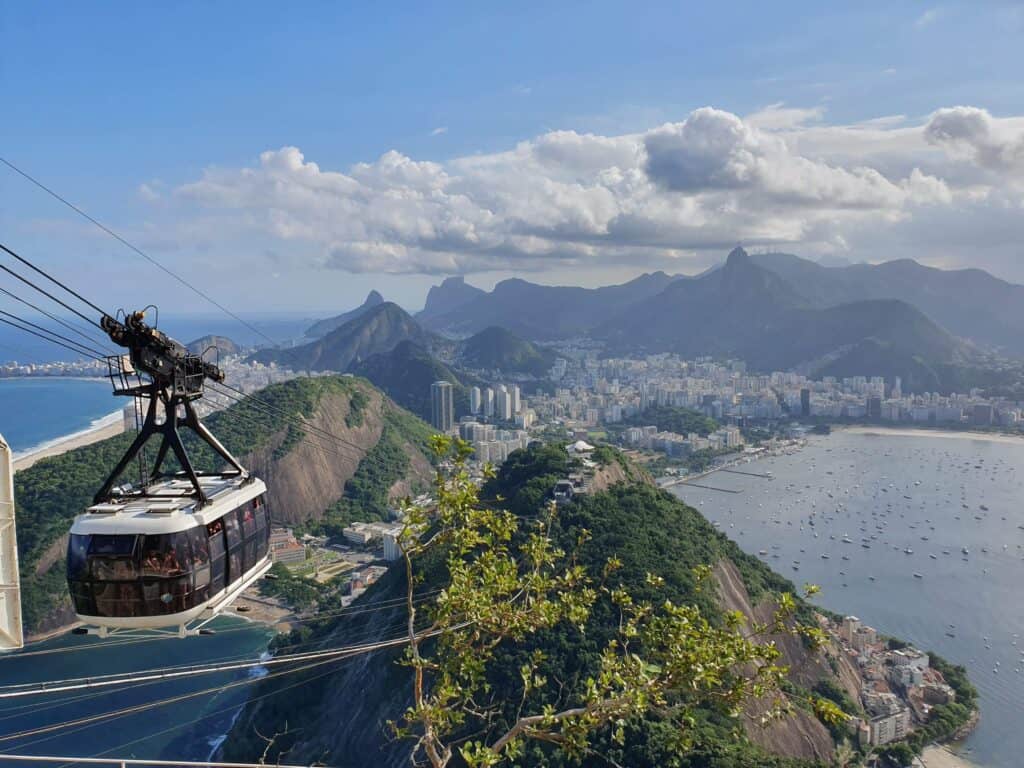
Sugarloaf Mountain
Sugarloaf Mountain (or “Pão de Açúcar” in Portuguese) is an iconic natural landmark that offers the most breathtaking panoramic views of the city and bays; and is a must visit when in Rio.
Sugarloaf Mountain’s history dates back to at least 1565 when it was first named by the Portuguese during the early days of Rio de Janeiro’s colonisation. The mountain’s unique shape reminded them of the traditional sugarloaves used in their homeland, which led to its distinctive name. Over the years, Sugarloaf Mountain has played a significant role in Rio’s cultural and military history, serving as a strategic lookout point during various conflicts and becoming an enduring symbol of the city’s natural beauty.
How To Get There: To reach the summit take the cable car system, known as the “Bondinho.” This ride takes you on a two-part journey from the base station at Praia Vermelha to the first peak, Morro da Urca, and then onwards to the top of Sugarloaf Mountain itself. The entire trip takes about 20 minutes and offers stunning views of Rio’s coastline and the surrounding cityscape.
The easiest way to reach the base station at Praia Vermelha is by taxi or ride-share service, such as Uber. Alternatively, you can take the public bus or the metro to Botafogo station and then walk or take a short taxi ride to the cable car entrance.
Tickets for the cable car can be purchased online or at the ticket booth and the site is open from 8am-9pm daily.
As this is another popular site, it is best to come early in the morning or late in the evening (for sunset). As Sugarloaf can be shrouded in cloud, keep an eye on the local weather forecast and be flexible with your itinerary so you can take the opportunity to visit as soon as the skies are clearer to enjoy the incredible views.
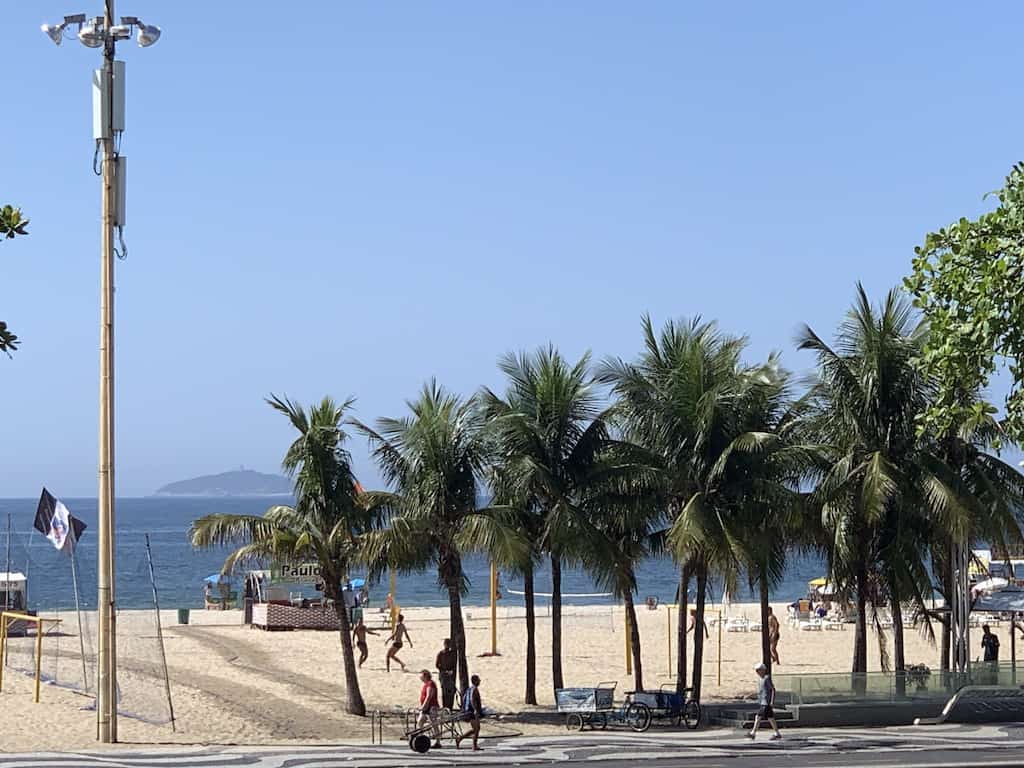
Copacabana Beach
No visit to Rio would be complete without spending time on the world-famous Copacabana Beach. This bustling stretch of sand is the perfect place to people-watch, sunbathe, or take a refreshing dip in the ocean.
The beachfront is styled in a black and white wave pattern inspired by the pavements in Portugal and is a well-maintained walkway to stroll, jog or ride a bike and enjoy the beach area.
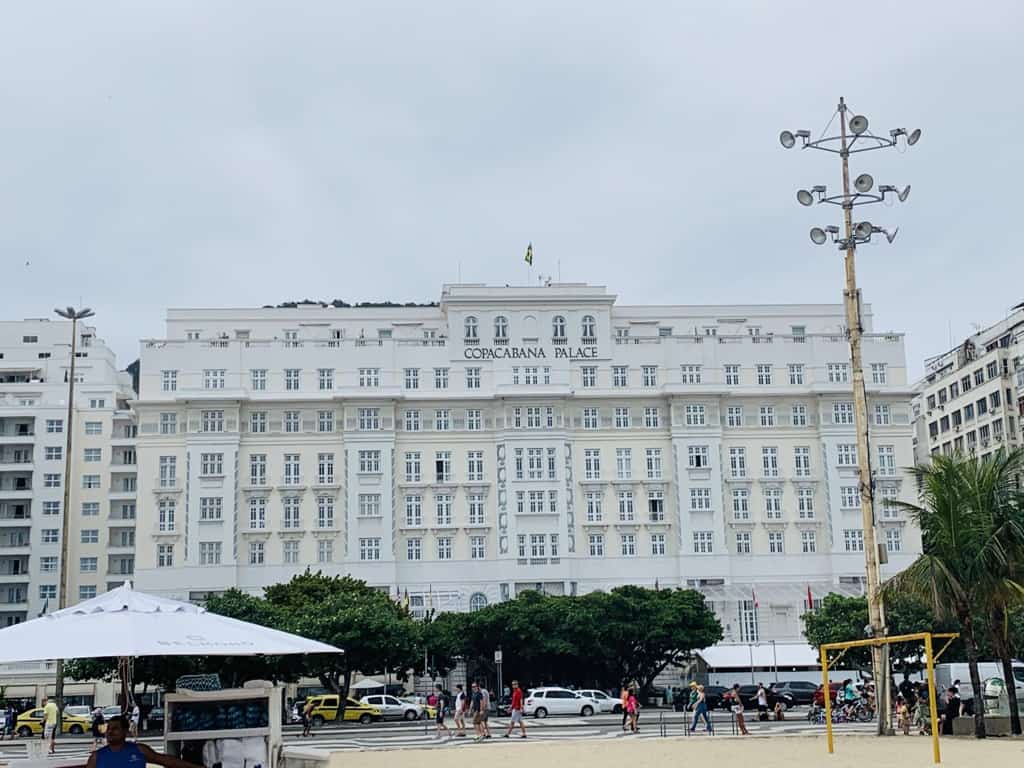
Copacabana Palace Hotel
One of the most famous landmarks on Copacabana Beach is the opulent Copacabana Palace Hotel. This iconic hotel, with its elegant Art Deco façade and prime beachfront location, has been a symbol of luxury and refinement since it first opened its doors in 1923. Indulge in a sumptuous meal at one of the hotel’s fine dining establishments, or sip a refreshing caipirinha by the hotel pool.
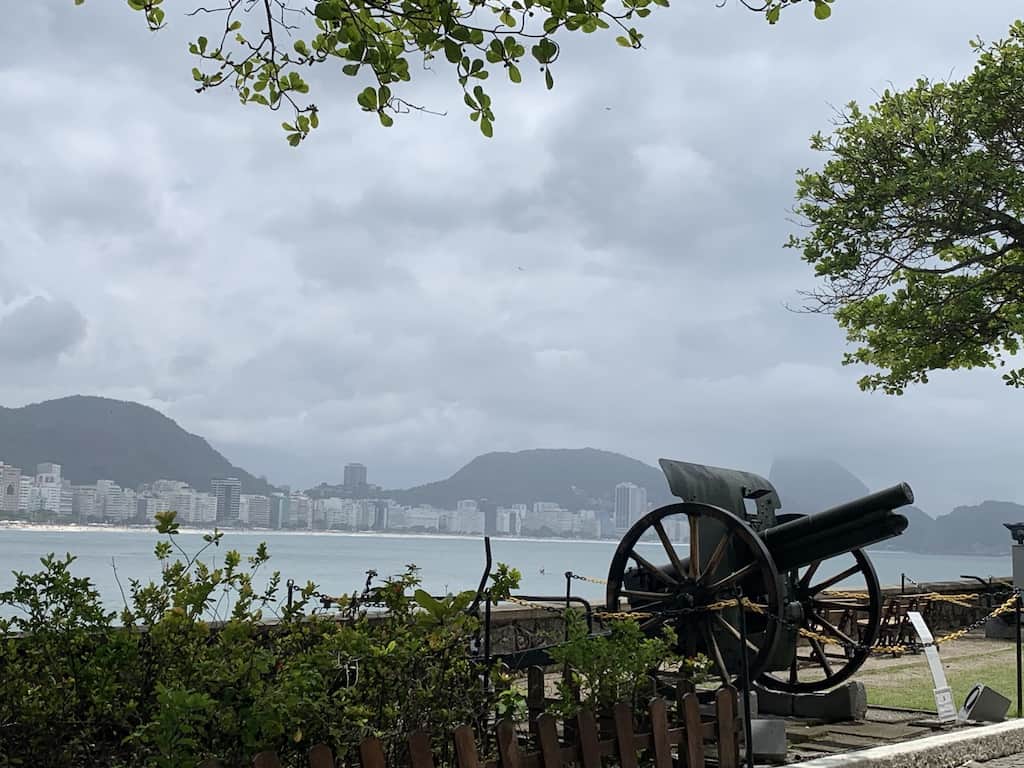
Fort Copacabana
Fort Copacabana is a historic military fortress located at the southern end of Copacabana Beach and offers a fascinating insight into Brazil’s military history, coupled with breathtaking views of the city’s coastline. Constructed in the early 20th century to protect Rio’s harbour from potential attacks, the fort boasts impressive architectural features, including massive coastal defense guns and a network of underground tunnels.
Today, the fort is an Army Historical Museum, where you can explore various exhibits displaying uniforms, weapons, and other military artefacts, as well as learn about the key events that shaped Brazil’s armed forces throughout history.
The fort also offers stunning views of Copacabana Beach and the surrounding ocean. There are also a number of great places to eat situated within the fort’s walls including a branch of Confeitaria Colombo, a chic café that has a great selection of traditional Brazilian pastries, sandwiches, and drinks.
The fort is open Tuesday to Sunday 10am-7pm.
Food & Drink Options
In addition to buying food and drink from the vendors at the beach, there are many food and drink stands and bars along the beach front
Another great food option is the Churrascaria Palace which is an all you can eat meat grill and very close to Copacabana Beach.
How To Get There: Copacabana Beach is easily accessible by public transportation, including buses and the metro system. The closest metro stations are Cardeal Arcoverde, Siqueira Campos, and Cantagalo.
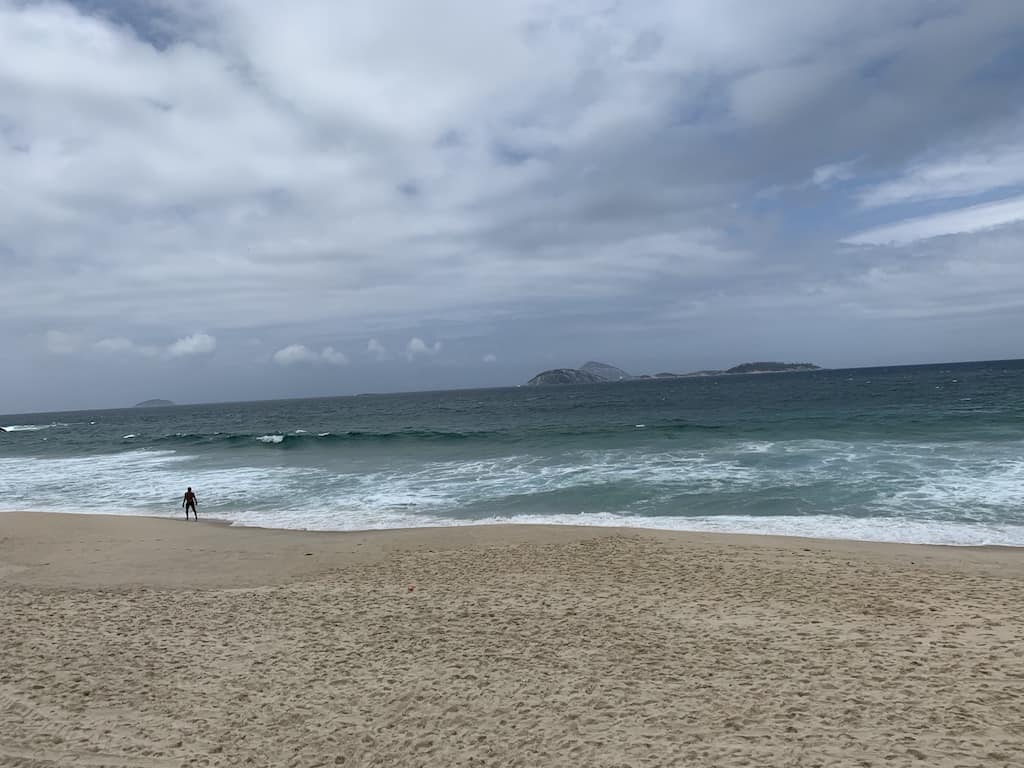
Ipanema Beach
Ipanema Beach, is one of Rio’s most iconic and beloved destinations. Spanning approximately 2 kilometres (1.2 miles) in length, Ipanema Beach soft white sand and shimmering turquoise waters. The area is full of lively cafes and bars and offers plenty of opportunities for entertainment, relaxing and people watching.
Ipanema’s rich musical history is another aspect that sets it apart from other beaches. Immortalised in the classic bossa nova song “The Girl from Ipanema” by Antônio Carlos Jobim and Vinícius de Moraes, the beach has long been associated with Rio’s thriving music scene.
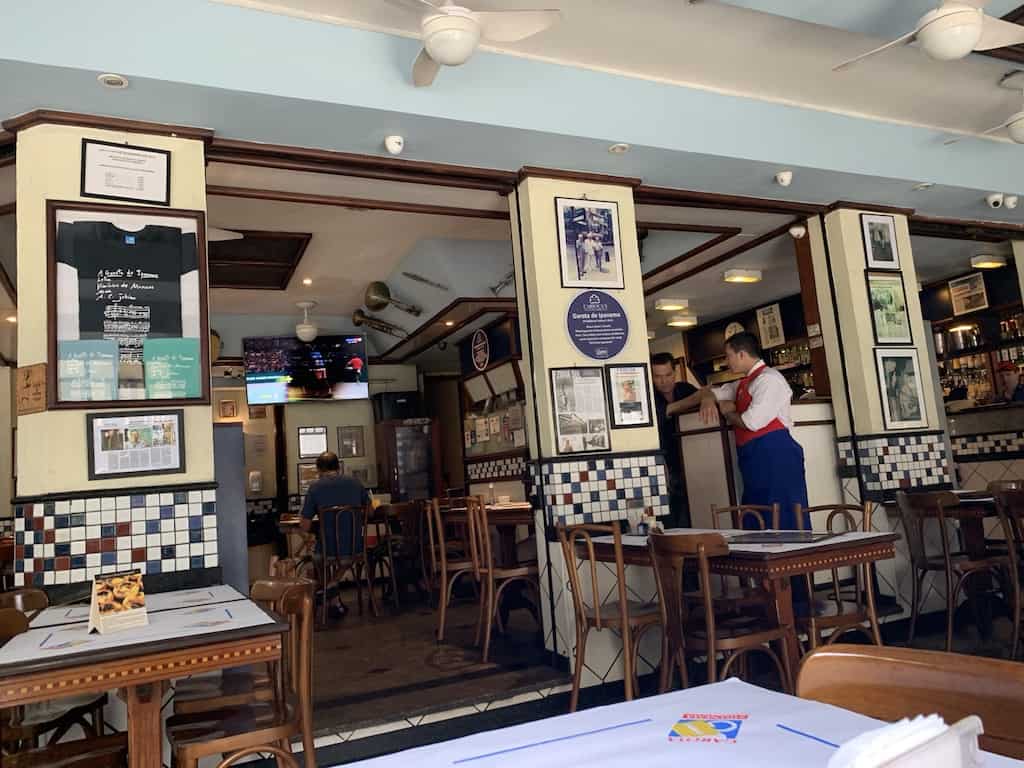
The actual spot where the song was written is the bar Garota de Ipanema (originally known as the Veloso Bar). The song’s inspiration was a young woman named Heloisa Eneida Menezes Paes Pinto, who often strolled past the bar on her way to the beach.
This bar is a great stop for food and drink as is Bar Astor which overlooks the beach. Both offer a great drink and food menu.

Another, fun thing to do in Ipanema, is to visit the the Feira Hippie de Ipanema, a bustling and colourful open-air market that has been an integral part of the area since its inception in 1968. This lively market takes place every Sunday, and has numerous stalls selling clothing, jewellery, souvenirs, and mouthwatering street food.
The market opens around 10am (only Sundays) and starts to close down in the early evening.
How To Get There: Ipanema Beach is easily accessible by public transportation, including buses and the metro system. The closest metro stations are Nossa Senhora da Paz and General Osório.

Lapa
Lapa, a lively and historic neighbourhood and is widely recognised as the epicentre of the city’s nightlife. Its charming cobblestone streets are lined with bars, clubs, and restaurants, offering all who come a great nightlife experience. In addition to experiencing the nightlife, the Lapa neighbourhood has some great places to visit.
Arcos da Lapa
The iconic Arcos da Lapa, a magnificent white aqueduct turned tram bridge, serves as a stunning backdrop for the area. As the sun sets, the streets around the aqueduct come alive with the sounds of samba, and bossa nova, inviting everyone to dance and revel in the infectious energy that permeates the air.
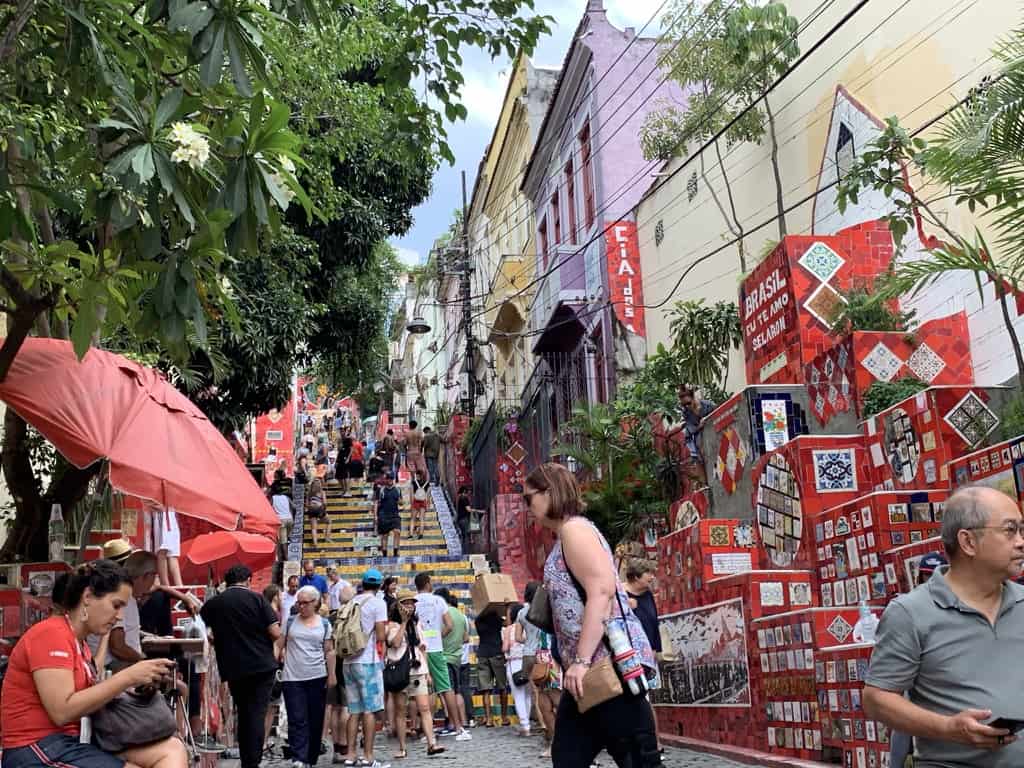
Selaron Steps
This world-famous open-air staircase, adorned with over 2,000 colourful tiles collected from more than 60 countries, is the result of a tireless labour of love by Chilean-born artist Jorge Selarón. As you ascend the 215 steps, you’ll be captivated by the intricate mosaic patterns and great photo opportunities.
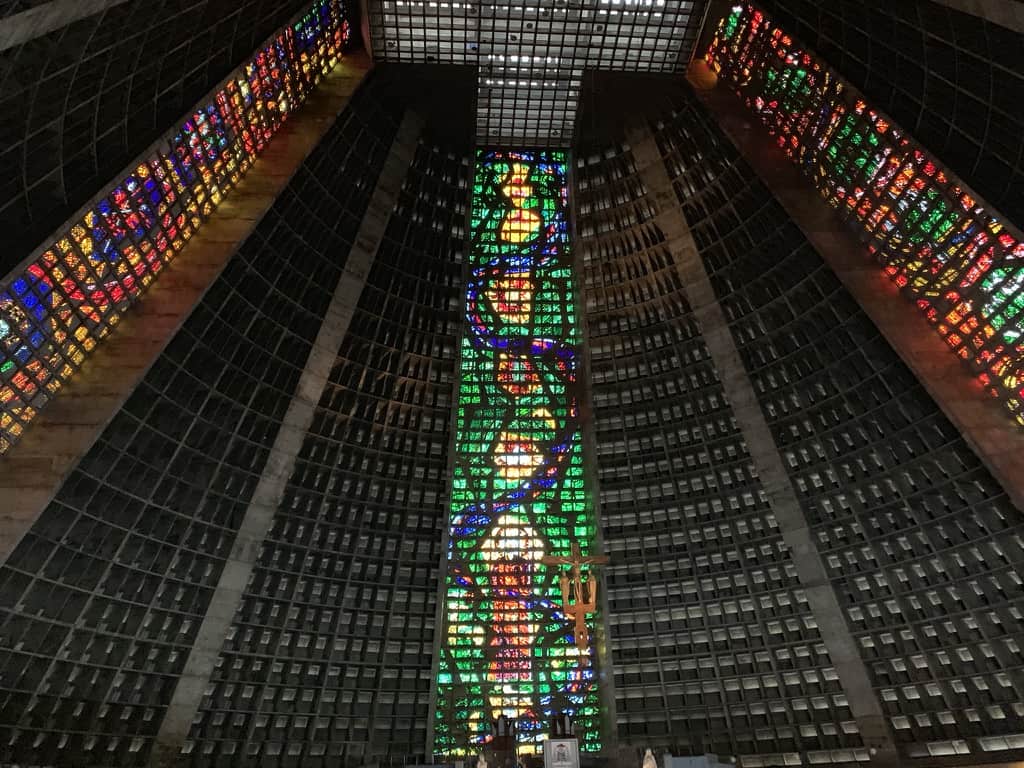
Metropolitan Cathedral
Another key attraction in the Lapa neighbourhood is the Metropolitan Cathedral of Saint Sebastian. Designed by renowned architect Edgar Fonseca and completed in 1979, this strikingly modern, conical-shaped cathedral stands as a bold departure from traditional church designs. The moment you step inside, you are greeted by an awe-inspiring sight: towering stained-glass windows that stretch from floor to ceiling, bathing the interior in a kaleidoscope of vibrant colours. As the sunlight filters through these magnificent windows, it creates an ethereal atmosphere that invites reflection and contemplation.
The cathedral is free to enter and open daily from 7am-5pm.
Lavradio Market
The Lavradio Market, also known as the Feira Rio Antigo, is held monthly on the first Saturday. This bustling market transforms Rua do Lavradio into a lively outdoor bazaar, where you can discover antiques and handcrafted goods. The charm of the Lavradio Market not only lies in the great market vibe but also the picturesque setting of its cobblestreets, lined with beautifully preserved colonial buildings.
The market opens around 10am (only Sundays) and starts down around 7pm.
Music
This neighbourhood is a true haven for music and has a number of live music venues, ranging from intimate bars to bustling dance clubs.
One unforgettable experience was attending a live performance at Circa Voador, an open-air venue that has hosts some of Brazil’s most famous musicians.
How To Get There: Take the metro, Line 1 towards Uruguai or Line 2 towards Pavuna, and disembark at Cinelândia station. From there, it’s just a short walk to the heart of Lapa.
Alternatively, you can also reach Lapa by taking one of the many public buses or use taxi/ride-share services.
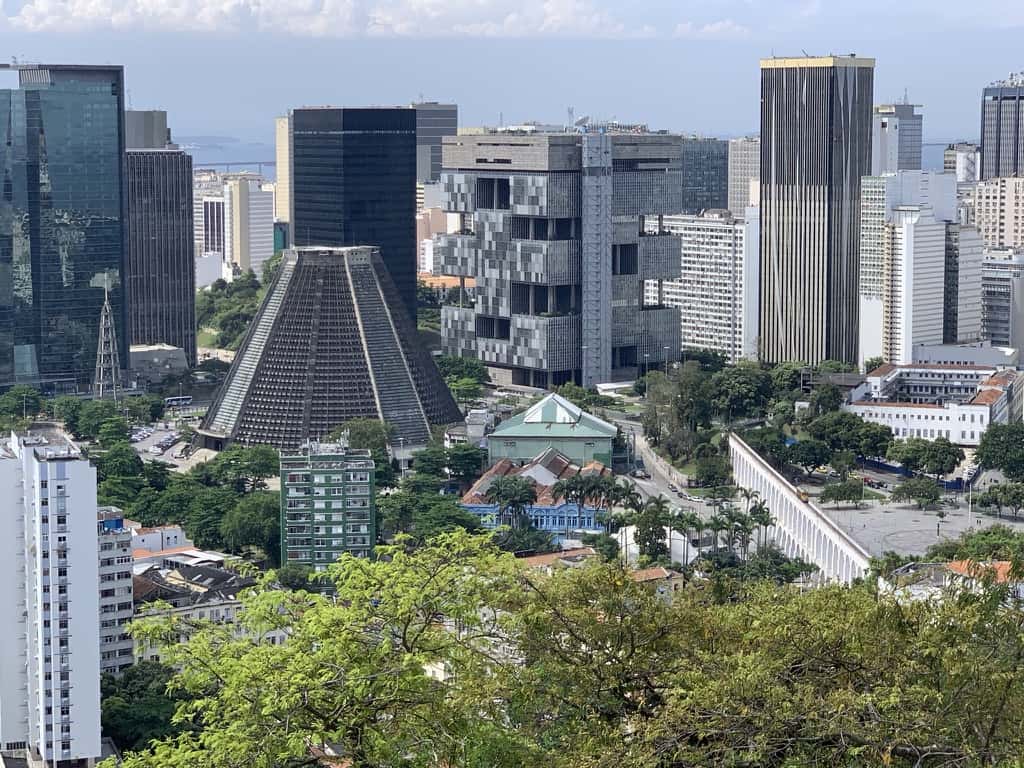
Centro & Cinelandia
The city’s downtown area, known as Centro, is brimming with history and has numerous architectural masterpieces.
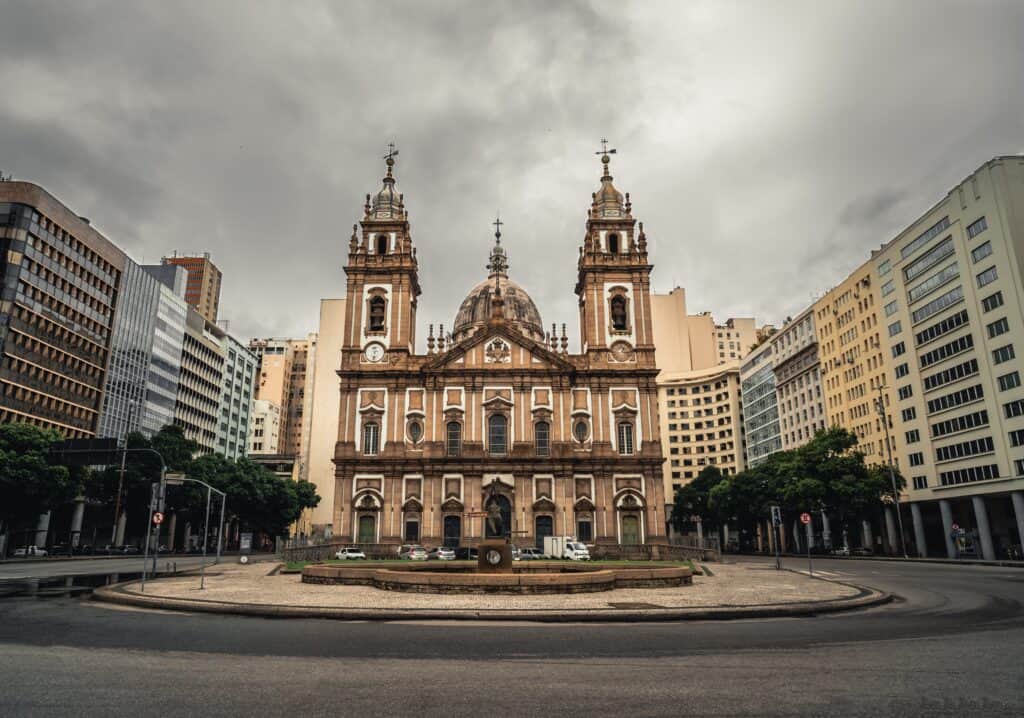
Candelaria Church
Is a stunning 19th-century Roman Catholic church adorned with intricate artwork and magnificent marble columns.
The church was built on the site of a small chapel dedicated to Our Lady of Candelária, which dates back to the early 17th century. Its construction spanned over a hundred years, resulting in an exquisite blend of architectural styles, including Baroque, Rococo, and Neoclassical.
The church’s opening hours can vary depending on the day and specific events, so it is always a good idea to check ahead before planning your visit. Generally, Candelária Church is open Mon-Fri 7:30am-4pm, Sat 8am-4pm and Friday 9am-1pm.

Royal Portuguese Reading Room
Housed within a Neo-Manueline building, this breathtaking library boasts an impressive collection of Portuguese literature. Established in 1837 by a group of Portuguese immigrants, this place is a true treasure trove for literature enthusiasts and history buffs as it boasts one of the largest collections of Portuguese literature outside of Portugal. With its towering wooden bookshelves, intricately crafted chandeliers, and exquisite stained-glass skylight, the Reading Room’s awe-inspiring interior transports visitors back in time to the grandeur of the 19th century.
The library is 9-6pm Monday to Friday and entrance is free.
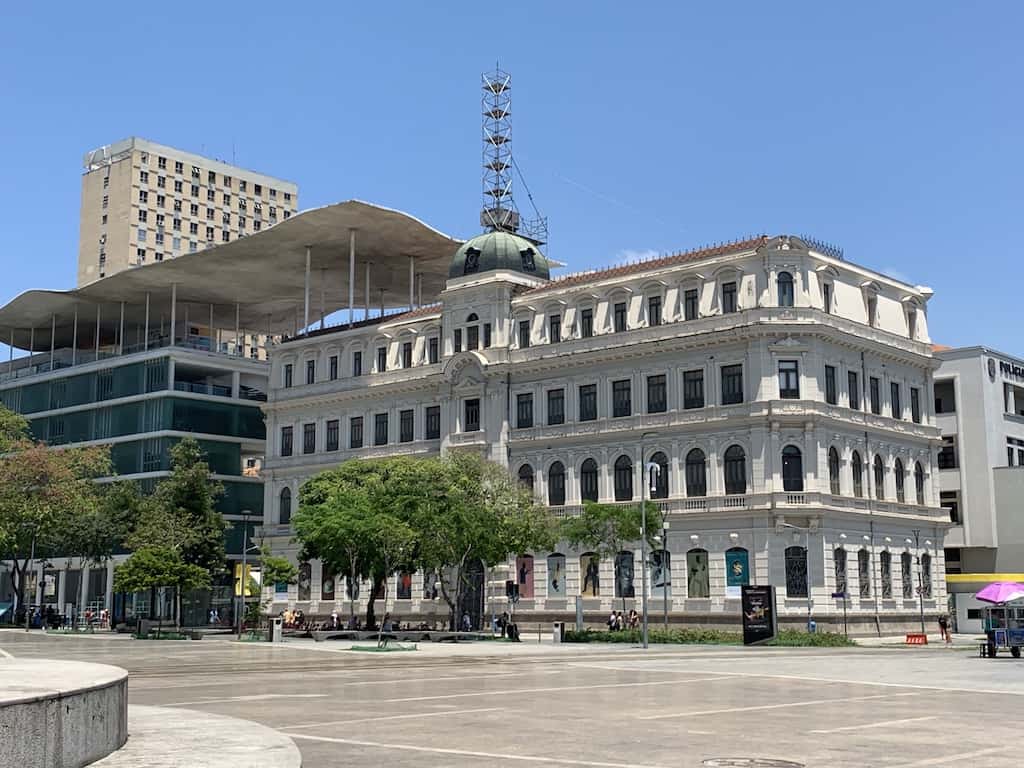
Museu de Arte do Rio (MAR)
Museu de Arte do Rio (MAR), is a cutting-edge cultural institution situated in Rio’s revitalized port area. Housed within two beautifully restored buildings – a former palace and a modernist structure – connected by a canopy, MAR showcases a captivating blend of contemporary Brazilian art and historical artefacts that reflect the city’s rich cultural tapestry. The museum’s thoughtfully curated exhibitions provide visitors with a deeper understanding of Rio’s complex social fabric, while its diverse range of educational programs and workshops promote artistic expression and engagement within the community. Additionally, MAR’s rooftop terrace offers a breathtaking panoramic view of the surrounding cityscape, including Guanabara Bay and the Museum of Tomorrow.
The museum is open Tues-Sun from 10am-5pm, and on Tuesdays the entrance is free.
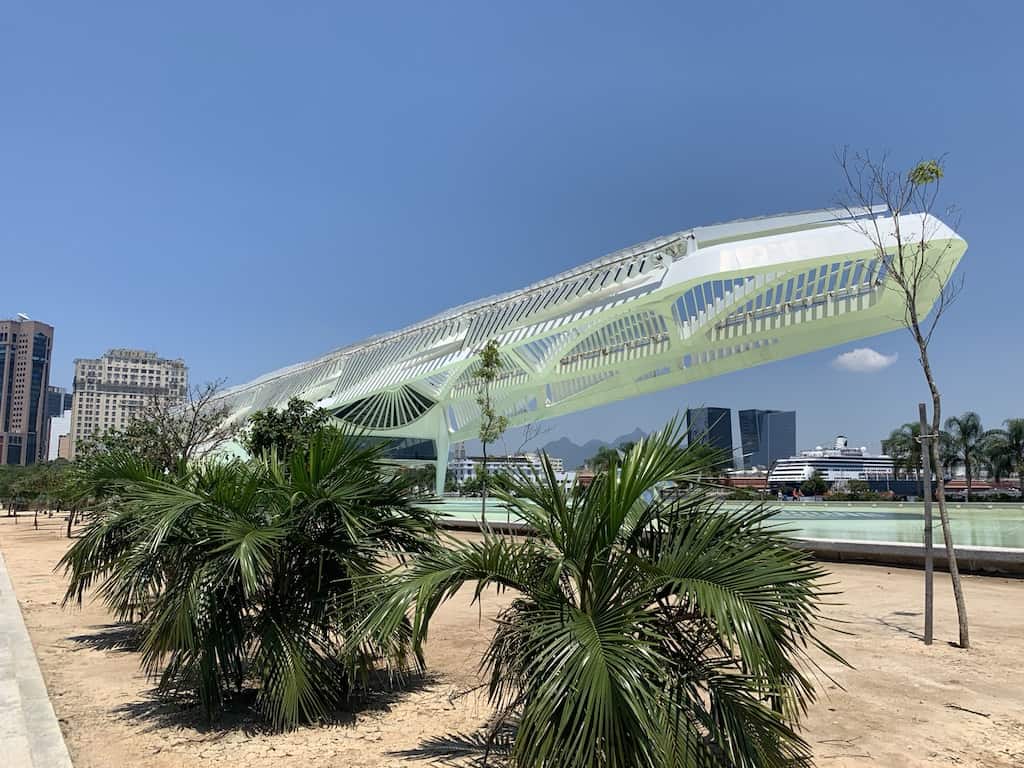
Museu do Amanhã (Museum of Tomorrow)
This applied science museum is located in the revitalised port area and its spaceship-like structure stands as a symbol of sustainable architecture. Inside, is a series of interactive exhibits and multimedia installations that delve into critical themes such as climate change, population growth, technological advancements, and the necessity for sustainable development. By posing important questions about our planet’s future and encouraging reflection on our collective choices, the Museum of Tomorrow invites you to consider their role in shaping a better and more equitable world for generations to come.
The museum is open Tue-Sun 10am-6pm and as the museum gets busy it is best to buy your tickets in advance.
Shopping & Plazas
If you want to visit a shopping district, then SAARA Market is where you will find hundreds of shops and stalls selling everything from clothing and accessories to souvenirs and household items.
The market generally operates Mon-Fri 9am-6pm and Fridays 9am-2pm and is closed on Sundays. To also note that many individual stores will have their own specific operating hours.
Tip: If coming to shop here, it is advisable to use only cash and just bring enough as the area is very crowded.
After a day of exploring Centro’s bustling streets, take a moment to relax in one of its many charming plazas. The Praça XV is a historic square featuring beautiful fountains, palm trees, and a stunning view of Guanabara Bay. Another tranquil spot is the Praça Paris, a lush green park dotted with sculptures, fountains, and a small amphitheater, perfect for unwinding when in the city.
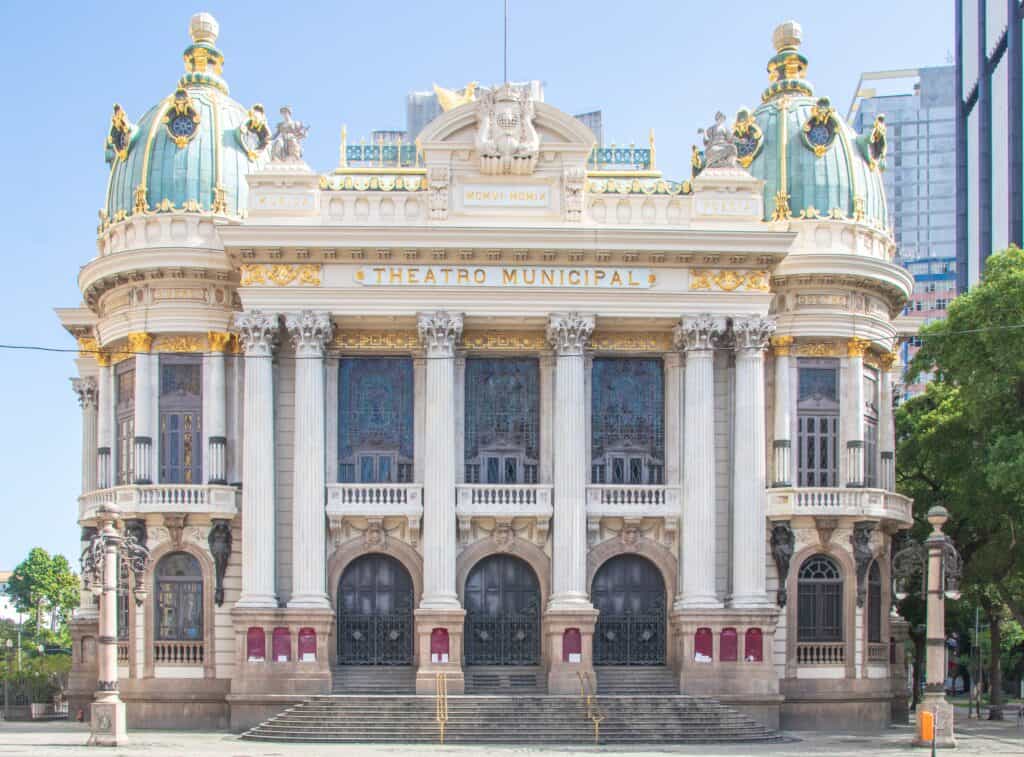
Cinelandia
Cinelandia, a vibrant and historic neighbourhood located in Rio’s downtown area. The district’s name, which translates to “Cinema Land,” is a nod to the elegant movie theatres that once lined its streets during the golden age of Brazilian cinema.
Today, Cinelandia is home to a number of cultural landmarks and beautifully preserved buildings that showcase the eclectic architectural styles of the early 20th century, such as:
The Municipal Theatre: Inaugurated in 1909, the theatre’s stunning design is heavily influenced by the Paris Opera House, showcasing a harmonious blend of neoclassical and art nouveau styles. Its opulent exterior features intricate sculptures, ornamentation, and a striking dome adorned with colorful tiles. Stepping inside, you are treated to a visual feast of gilded balconies, grand staircases, and breathtaking murals that celebrate Brazilian culture. The Municipal Theatre has long been a hub for the city’s performing arts scene, hosting world-class ballets, operas, and symphonic performances featuring local and international talent.
Tickets for performances or a tour of the theatre can be purchased through the theatre’s website.
The National Library: Established in 1810, the library houses an astonishing collection of over nine million items, including rare books, manuscripts, maps, photographs, and other invaluable documents that chronicle the nation’s rich literary and historical legacy. The library’s grand neoclassical building is a testament to the architectural prowess of the early 20th century, featuring elegant columns, intricate ornamentation, and spacious reading rooms adorned with stunning frescoes.
The library is free to visit and open every day except Sundays.
Museum of Fine Arts: Established in 1937, the museum is housed in a striking neoclassical building and is filled with artwork by renowned Brazilian artists as well as international masters. The museum’s expansive collection is thoughtfully curated to provide a comprehensive and engaging journey through the world of art, showcasing not only the aesthetic beauty of each piece but also the historical context and cultural significance that underpin it.
The museum is open Tue-Fri from 10am-6pm and Saturday & Sundays from 12-5pm. The museum is free to visit on Sundays.
How To Get There: Take the metro and hop on Line 1 towards Uruguai or Line 2 towards Pavuna, disembarking at the Cinelandia station. Upon exiting the station, you’ll find yourself right in the midst of this bustling square, surrounded by historic landmarks, theatres, and museums. Alternatively, you can get on one of the many public buses that go to Cinelandia or grab a taxi.
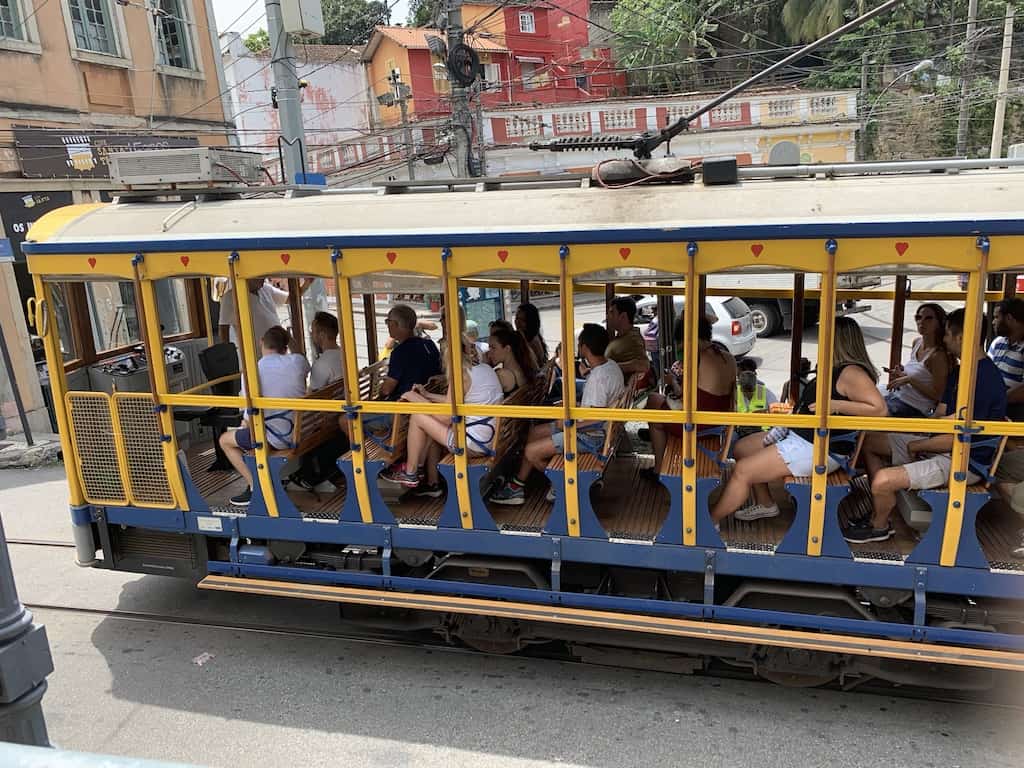
Santa Teresa
Perched on a hill overlooking the bustling streets of downtown Rio, Santa Teresa is Rio’s beloved bohemian district.
Santa Teresa’s origins date back to the late 19th century when it was established as an upper-class suburb, attracting wealthy families who built beautiful mansions amidst the lush greenery of the hillside. Over time, the neighbourhood evolved into a haven for artists, writers, and musicians, earning its reputation as Rio’s bohemian heart.
Today, Santa Teresa is a melting pot of creativity and history, where stunning colonial architecture mingles with contemporary art galleries, shops, lively bars, and eateries.
Parque das Ruinas (Park of the Ruins)
Once the opulent mansion of Brazilian socialite Laurinda Santos Lobo, the estate fell into disrepair after her death, leaving behind an intriguing blend of architectural remnants. In the 1990s, the site was transformed into a public park and offers breathtaking panoramic views of the city below. The park frequently hosts a variety of events, including art exhibitions, live music performances, and theatre productions.
The park is generally open Tue-Sun from 8-6pm and free. On most Sunday afternoons you can catch live music performances which are also usually free.
Museu da Chacara do Céu
Housed in the former residence of Brazilian art collector and philanthropist Raymundo Ottoni de Castro Maya, this charming museum showcases an impressive collection of Brazilian and international art. The museum’s setting is equally captivating, with its elegant modernist architecture and beautifully landscaped gardens offering sweeping views of the city and Guanabara Bay.
The museum is open Tue-Mon 12-5pm and has free entry on Wednesday.
How To Get There: One popular option is to take the iconic Bonde tram, which offers a scenic ride through the city, starting from the Carioca station in downtown Rio. This historic tramway provides a unique experience as it climbs the hills, offering stunning views of the city below. Alternatively, you can opt for public buses or taxis, both of which are readily available throughout Rio and can quickly transport you to Santa Teresa.

Football
For die-hard football (or soccer) fans no visit to Rio would be complete without a visit to the legendary Maracanã Stadium. This venue, which once held nearly 200,000 people during the 1950 World Cup final, has been the stage for countless memorable moments in football history. Today, the stadium has a reduced capacity of around 78,000 but retains its awe-inspiring atmosphere.
If there’s no game scheduled during your visit, you can still explore the stadium on a guided tour which includes, visiting the locker rooms walking on the pitch and a visit to the club’s museum.
How To Get There: The easiest way to get there is by taking the metro; simply hop on Line 1 towards Uruguai or Line 2 towards Pavuna and disembark at Maracanã station. Upon exiting the station, you’ll find yourself just a short walk away from the entrance of the stadium. Alternatively, you may choose from the number of public buses that go to the stadium or use a ride share or taxi.
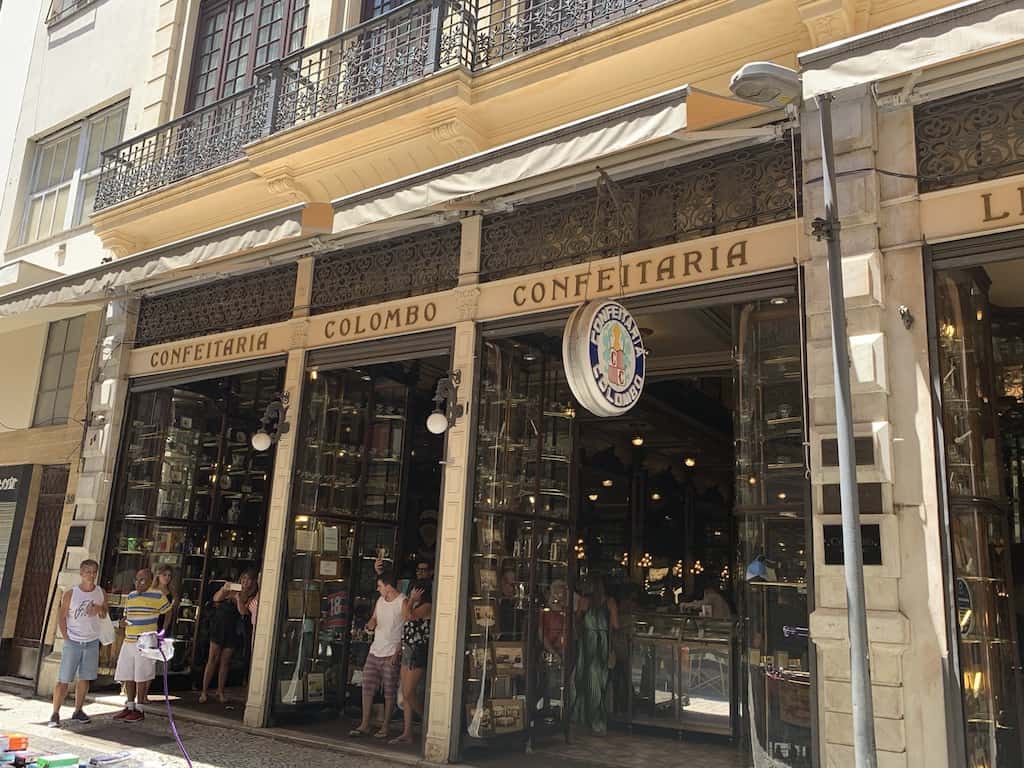
Food & Drink
The city offers an incredible number of dining experiences from high-end restaurants to local cafes and street food vendors. Here are some of the city’s must try food ands where to find them.
Cheese Balls (Pão de Queijo: These deliciously cheese balls are a popular Brazilian snack made from tapioca flour, eggs, and grated cheese. They are soft and chewy on the inside, with a slightly crispy exterior. Pão de Queijo can be found at most bakeries and cafes in Rio, such as Casa do Pão de Queijo and Rei do Mate.
Tapioca Pancakes: Tapioca pancakes are a traditional street food made from hydrated cassava flour. They are thin and flexible, similar to crepes, and can be filled with sweet or savory ingredients. One of the best places to try them in Rio is at Bibi Sucos, a local chain found throughout the city.
Churros: A beloved dessert in Rio, originally hailing from Spain, these deep-fried dough pastries are coated in sugar and cinnamon, and often filled with creamy dulce de leche or chocolate. You can find churros at many street food vendors throughout the city, particularly near the beaches. For a more upscale churro experience, visit Churreria Vila Madalena in the trendy neighbourhood of Botafogo.
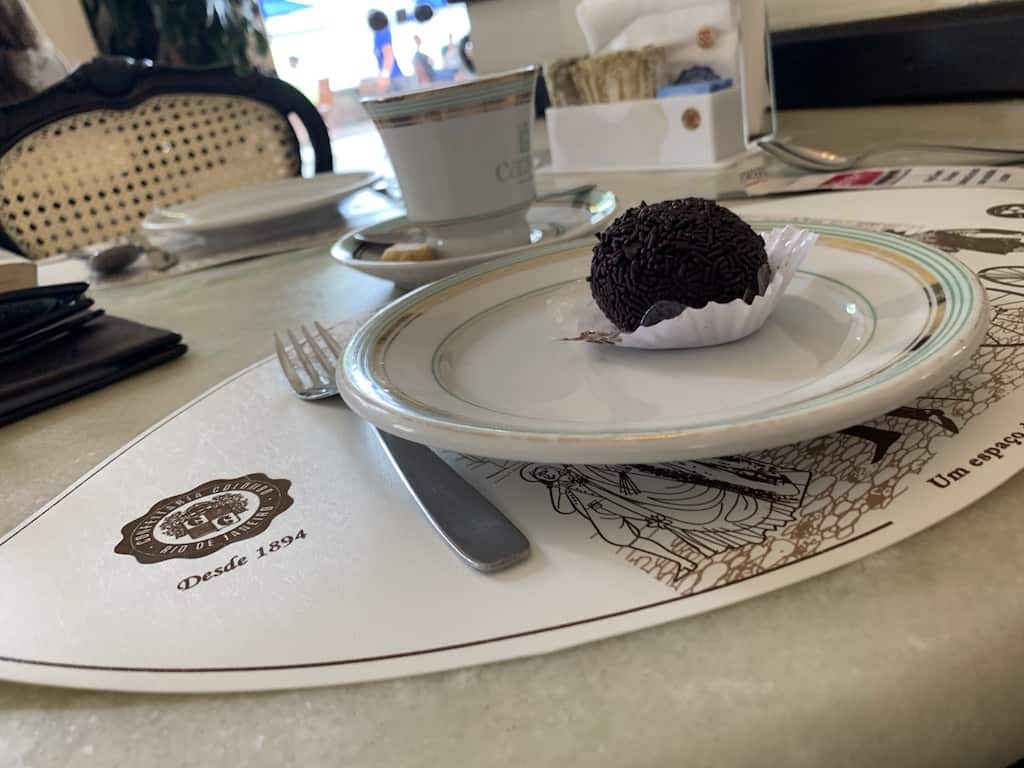
Chocolate: Brazil is one of the world’s largest producers of cocoa, so it’s no surprise that there are plenty of chocolate treats to enjoy in Rio. From artisanal chocolate shops like Cacau Noir to elegant cafes such as Confeitaria Colombo. Don’t miss the iconic Brazilian chocolate truffle, the brigadeiro, which can be found at any bakery or street fair.
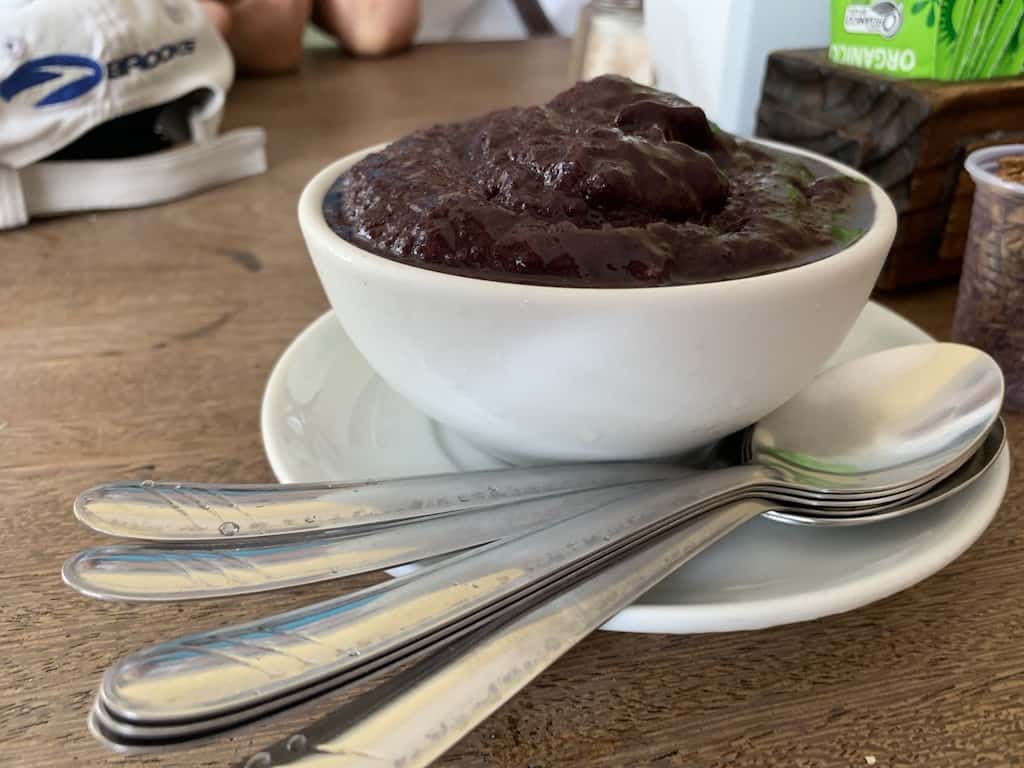
Açaí: Açaí is a superfood native to Brazil, known for its vibrant purple color and numerous health benefits. In Rio, you’ll find açaí served as a frozen smoothie-like treat, often topped with granola or fruit. Some popular spots to grab a bowl of açaí include Polis Sucos and Big Nectar.
Pastel: These deep-fried pastries, similar to empanadas, are filled with a variety of ingredients such as cheese, meat, shrimp, or sweet fillings like guava paste. They’re crispy on the outside and bursting with flavour on the inside, making them a perfect snack to enjoy on the go.
Coxinha: A popular Brazilian snack, coxinha is a teardrop-shaped croquette made from shredded chicken and creamy cheese, encased in a dough and then deep-fried to golden.
Feijoada: This stew made with various cuts of pork, and at times beef, is the country’s national dish. Traditionally served with rice, greens, farofa (toasted cassava flour), all which help to balance the rich flavours. Rio has many places to eat authentic feijoada and one of the most popular is Casa da Feijoada in Ipanema, known for its delicious homemade-style stew. Another well-regarded option is Bar do Mineiro in the neighbourhood of Santa Teresa.
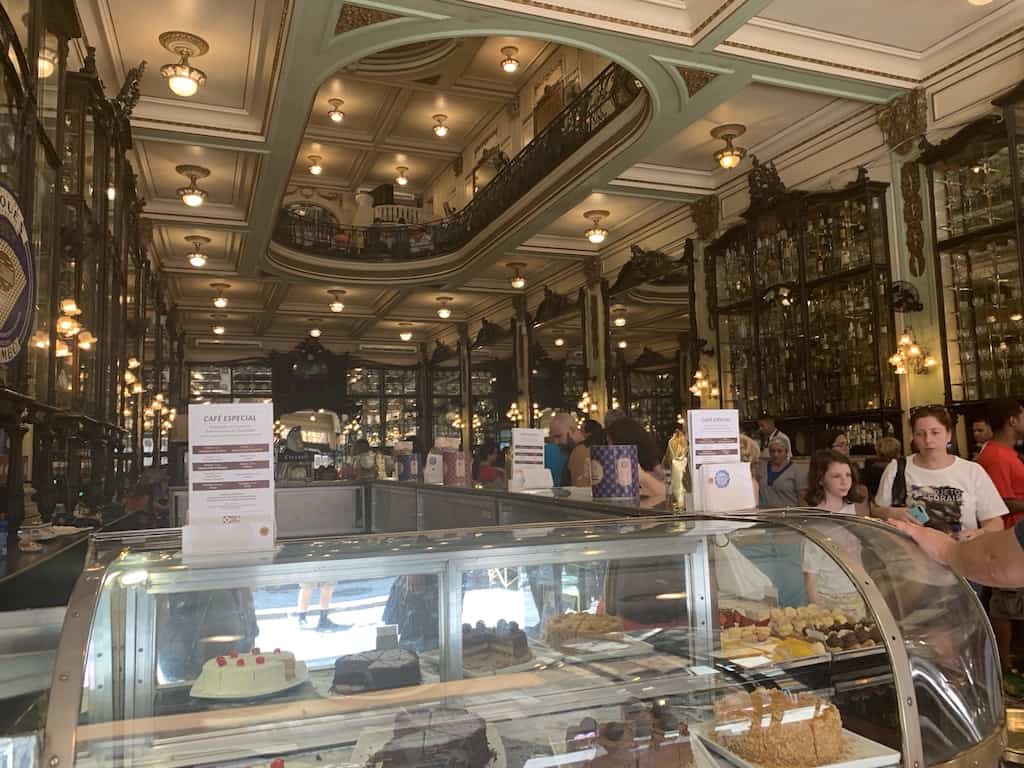
Coffee: One of the country’s biggest exports, Rio has many cafes and coffee shops that serve high-quality Brazilian coffee. One of the most notable spots to enjoy a cup of coffee is Confeitaria Colombo, a historic cafe located in the heart of downtown Rio. With its stunning Belle Époque architecture and mouth-watering pastries. For those seeking a more modern ambiance, head to Sofá Café in Copacabana, known for its comfortable seating, friendly service, and high-quality brews.
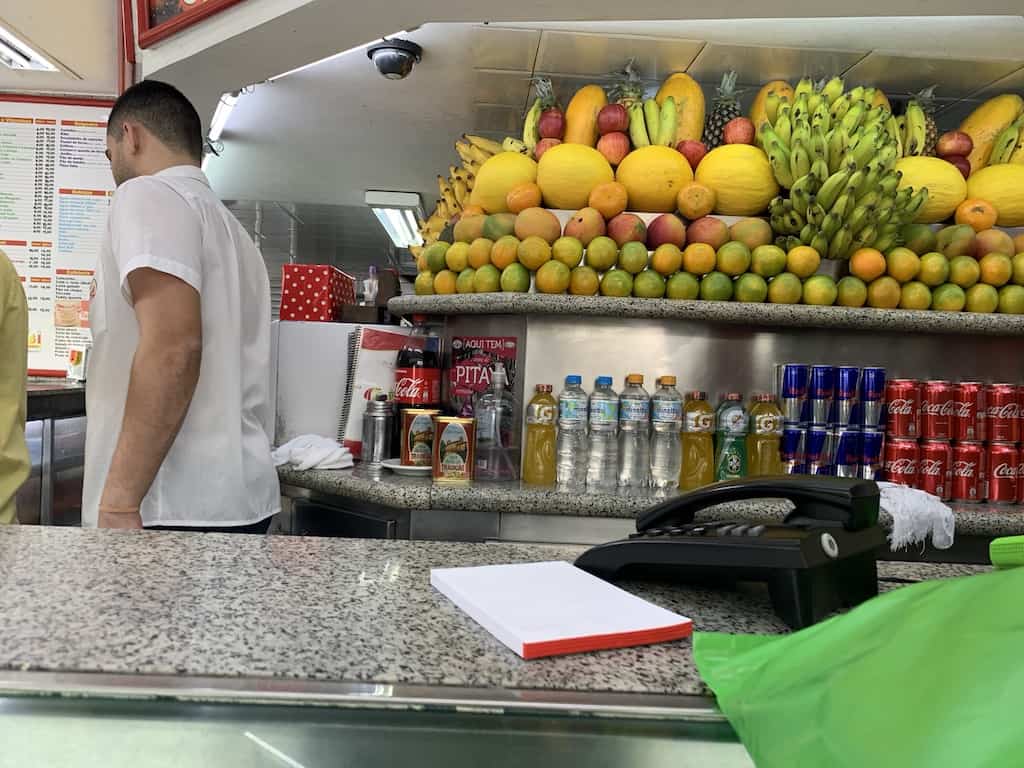
Fresh Fruit Juices (Sucos): Brazil is blessed with an abundance of tropical fruits, and what better way to enjoy them than in a freshly squeezed juice. You’ll find juice bars, or “sucos,” on almost every corner in Rio, offering a wide variety of flavours, from classics like orange and pineapple to more exotic options like acerola and maracujá (passion fruit). Visit Bibi Sucos or Polis Sucos, both known for their extensive menus and high-quality ingredients.
Caipirinha: No trip to Rio would be complete without sipping on Brazil’s national cocktail, the Caipirinha. This refreshing drink is made with cachaça (a Brazilian sugarcane spirit), lime, sugar, and ice. You can find Caipirinhas at almost any bar or restaurant in Rio, but for a truly authentic experience, head to Bar do Mineiro in the historic neighborhood of Santa Teresa. Their classic Caipirinha is perfectly balanced and served in a chilled glass.
Coconut Water (Água de Coco): Nothing beats the heat in Rio like sipping on ice-cold coconut water straight from the source. You’ll find vendors selling fresh coconuts along the city’s beaches and at street markets, ready to crack one open for you on the spot.
Guaraná: Is a distinctive Brazilian fizzy soft drink derived from the guaraná fruit found in the Amazon basin, reminiscent of apple and berries. Exclusively available in Brazil, Guaraná holds a cherished place among locals as a cooling refreshment on a hot day. Guaraná, can be found in the many kiosks and shops throughout the city.
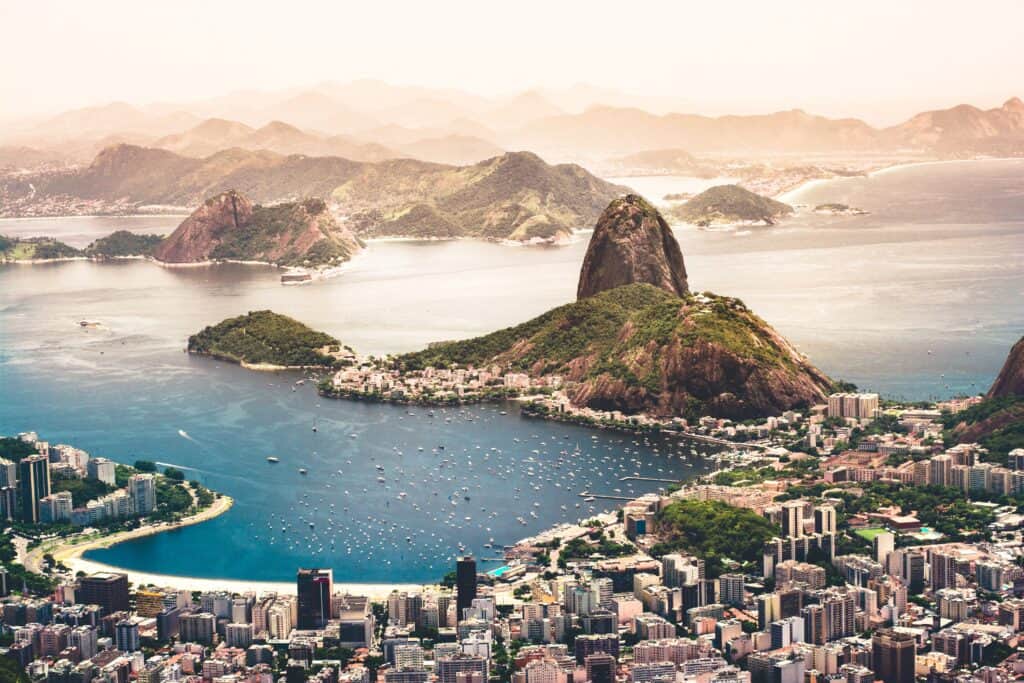
So To Wrap Up On The Best Things To Do In Rio…
Rio de Janeiro is a city that has something to offer for everyone. Its stunning sights and breathtaking landscapes make the city a must-visit destination. Rio provides activities and attractions that will delight, from taking in Christ the Redeemer, magnificent views from Sugarloaf Mountain, sunbathing on Copacabana Beach or exploring the many great neighbourhoods there is no shortage of sights and activities to enjoy in this incredible city.
Want to experience Rio from the air, read on for the Best Helicopter Tour to take in Rio.

